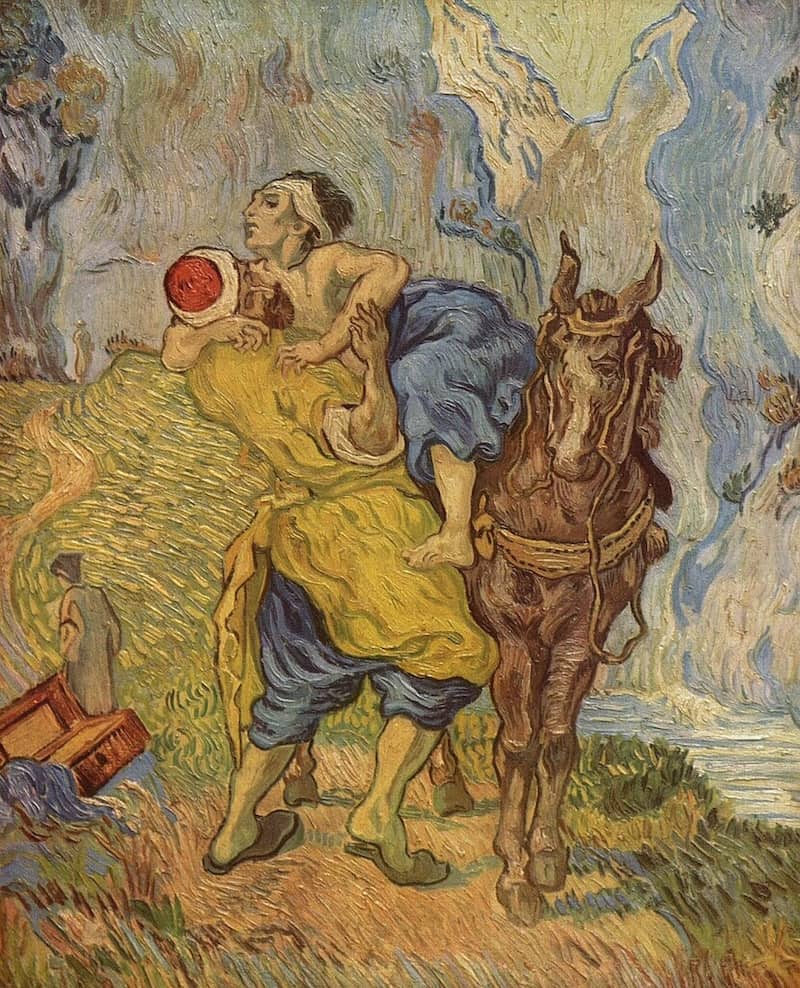The Good Samaritan, 1890 by Vincent van Gogh

On May 8, 1889, exhausted, ill, and out of control, Vincent Van Gogh committed himself to St. Paul's psychiatric asylum in Saint-Remy-de-Provence, a small hamlet in the south of France. A former monastery, the sanitarium was located in an area of cornfields, vineyards and olive trees. There Van Gogh was allowed two small adjoining cells with barred windows. One room he used as his bedroom, and the other was his tiny studio. While there, Van Gogh not only painted the surrounding area and the interior of the asylum, he also copied paintings and drawings by other artists, making those paintings his own through modifications he made to the painting's composition, the colors and, of course, the brush strokes.
One of the artists whose works Van Gogh copied and modified was the Dutch Gold Age painter Rembrandt. The Good Samaritan by Rembrandt drew Van Gogh's attention: in which a Samaritan man hoists a wounded man with a bandaged head onto a horse to be taken to an inn for recovery.
When Van Gogh was admitted to the sanitarium in St Remy de Provence, he had become so difficult, so sick that the townspeople of Arles, where he had been living and painting had given him the name "the red-headed madman." After a psychotic break during the visit of fellow artist Paul Gauguin, Van Gogh was all but put out of the town. With the help of a couple of people, he eventually made his way to the sanitarium in St Remy de Provence where he copied and modified Delacroix's painting of The Good Samaritan.
If viewers were to see the two paintings - Rembrandt's and Van Gogh's side by side - the first thing that would strike you is the light in Van Gogh's painting and the darkness in Rembrandt's. Though not sharing the bright colors of his paintings in Arles, Van Gogh's painting of The Good Samaritan, is well lit which means we can make out things more clearly in the painting.




















